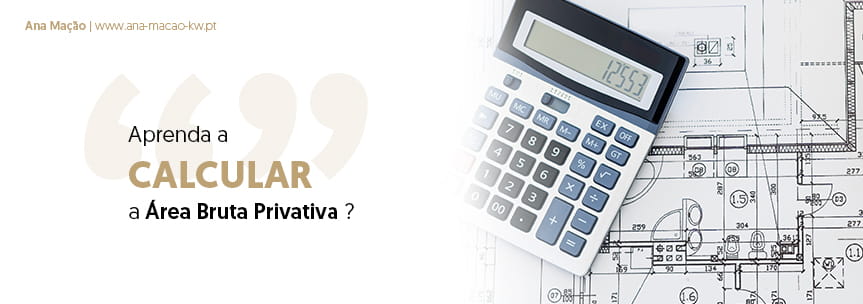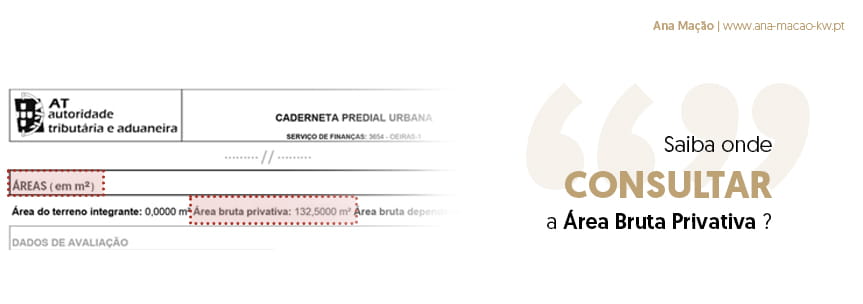Private Gross Area
When talking about buying or selling real estate, one of the terms that frequently comes up is "Gross Private Area" (ABP). This concept is crucial to understanding the value of a property and what you are actually buying or selling.
In this article, we will explore in depth what the Gross Private Area is, how it is calculated and why it is so important for the real estate sector.
Definition of Private Gross Area
In simple terms, the Gross Private Area represents the measurement, in square meters, of the habitable area of the closed interior of a house, or other type of property. I.e, in practice, the ABP is equal to the Useful Area plus the area occupied by walls, pillars and other partitions.
The more technical definition defines the Gross Private Area (GPA) as the total surface of all floors of the property, measured by the outer perimeter and axes of the walls or other separating elements of the building or fraction, and...
- Includes: Bedrooms, kitchen, living room, halls, corridors, bathrooms and other rooms of a property, as well as the areas of the respective walls, pillars and other partitions. Private balconies, basements and private attics with use identical to that of the building or fraction to which coefficient 1 applies (cf. art. 40, no. 2), of the Municipal Property Tax Code (CIMI), are also part of the Gross Private Area.
- Excludes: open balconies and terraces, patios, garden areas, garages, parking lots, storage rooms, external storage annexes, etc.
How to calculate the Gross Private Area?

To define the Gross Private Area, it is important to identify which spaces, with use coinciding with that planned for the building in question (commonly, in a house or building we are talking about use for housing ), in which case we will be dealing with gross private areas, and which spaces are used in addition to the use for which the property is intended, in which case we will be dealing with Gross Dependent Areas . The use of each of the spaces considered in the calculation of each of these areas must take into account the characteristics, specialties, finishing and use given to each of these spaces.
The work to calculate the Gross Private Area can be carried out by architects or specialized technicians and will have to coincide with the other documents of the house (Property Booklet, Technical Housing Sheet, Certificate of Content or Permanent Certificate of Land Registry, Energy Certificate, Blueprints obtained with the City Council, etc.,). If there are discrepancies, you should contact the entities issuing these documents to correct any errors.
Where to check the Gross Private Area?
The property register is the most accessible and appropriate document for consulting the Private Gross Area. In the most recent notebooks, this area is explicitly mentioned in the fraction data.

You can also obtain it through a plan with an area map.
How to correct and change the Private Gross Area?
Sometimes there are modifications to the initial structure of a house resulting from remodeling, use of the attic or storage area as a Duplex area, changes to the horizontal property and its fractionation, etc. that have an impact on the areas of a property. There are two entities where it is possible to request a change in the area of a house or building, with the Tax Authority (which will reflect this change in the Land Registry document) and with the Land Registry Office.
Frequently Asked Questions about Private Gross Area

These are some of the most frequently asked questions about the Gross Private Area of a property:
1. What is the Gross Private Area (GPA)?
The Gross Private Area (GPA) is the total surface of a property, measured in square meters, which results from the sum of all covered and habitable areas, including the exterior walls. The ABP corresponds to the space for the exclusive use of the property owner and is one of the main pieces of information to consider when buying, selling or renting a property.
2. How is the Gross Private Area calculated?
To calculate the Gross Private Area, the area of the different compartments of the property, including balconies and closed terraces, and the thickness of the exterior walls must be added.Generally, the measurement is made using a measuring tape or an electronic distance meter. It is important to note that the area of closed balconies and terraces is only considered if they comply with legal and urban planning standards. In common walls, for example in an apartment, you should consider half of the wall that separates it from the neighboring apartment.
3. What is the difference between Gross Private Area and Useful Area?
The difference is not big. The Gross Private Area (ABP) corresponds to the total surface of a property, including covered areas and exterior walls , being the space for the exclusive use of the owner. The Useful Area is the interior part of the property, excluding walls , internal partitions and areas occupied by infrastructure (such as columns or technical installations). The Useful Area therefore represents the space effectively available for use, without including the areas occupied by the property's structures.
4. What is the difference between Private Gross Area and Dependent Gross Area?
The Gross Private Area (GPA) is the total surface of a property for the exclusive use of the owner. The Gross Dependent Area (ABD) refers to spaces for common use or spaces that serve the property but that are not directly linked to its primary purpose (in the case of a house, use as housing), such as garages, storage rooms , attics or outdoor spaces for common use. The sum of ABP and ABD corresponds to the Total Gross Area (ABT) of the property.
5. Why is it important to know the Gross Private Area of a property?
Knowing the Gross Private Area is essential to assess the value of a property and compare it with other properties on the market. Furthermore, the ABP is one of the criteria used in calculating the tax asset value (VPT) of a property, which directly influences the value of the Municipal Property Tax (IMI) and the Property Transfer Tax (IMT).
6. How can I check the Gross Private Area of a property I intend to buy?
To check the Gross Private Area of a property you intend to buy, you can request this information from the builder, seller or the responsible real estate agent. Furthermore, this information must appear in the Urban Land Registry (CPU), available in the owner's reserved area, on the Tax Authority website, and in the property plan, available at the Land Registry Office or at the City Council. If you want to confirm the ABP, you can also hire a specialized technician or carry out the measurement yourself, using a tape measure or an electronic distance meter.
7. How can I correct the Gross Private Area of my property if it is wrong?
If the Private Gross Area of your property is wrong (e.g. areas wrongly classified as dependent gross area), you must hire a specialized technician (architect or engineer) to carry out the correct measurement and prepare a plan of the property with the updated ABP. You must then present this documentation to the Land Registry Office and the City Council to update the records and, if applicable, to the Tax and Customs Authority to correct the tax asset value (VPT) and, consequently, the Municipal Property Tax (IMI) and the Property Transfer Tax (IMT). Be careful, because if these are profound changes that include new spaces in the property, built afterwards, you will first have to submit a change project to the City Council.
8. Is it possible to increase the Gross Private Area of my property?
Yes, it is possible to increase the Gross Private Area of your property, as long as you respect the legal and urban standards applicable to your location. To do this, you must hire a specialized technician (architect or engineer) to prepare an expansion project and submit it to the City Council for approval. After approval and completion of the works, you must update the ABP in the records of the Land Registry Office, the City Council and, if applicable, the Tax and Customs Authority.
Important Note: The information in this glossary is for informational purposes only. For proper advice on legal or tax matters, consultation with a duly authorized lawyer, notary, solicitor, or accountant is essential.
Your next step in the real estate market
Whether you want to sell your property for the maximum value or find the ideal home, count on my experience as a Top Producer consultant at KW Portugal. Talk to me without obligation. Start today with a simple contact.
Contact Me Today
Related articles






